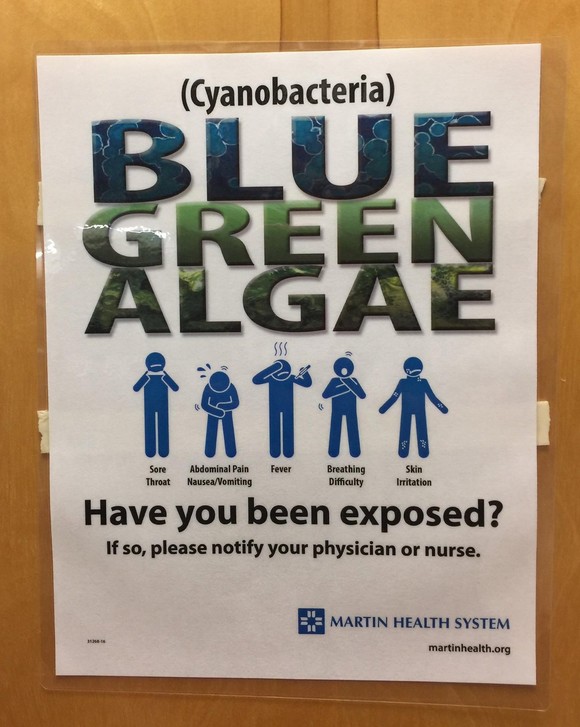
Perhaps the greatest challenge of investigating human illnesses thought to be from harmful algal bloom (HAB) exposure is the inability to confirm them with a readily available clinical diagnostic test. Without a diagnostic test, it is never certain that an illness is indeed the result of cyanotoxin exposure and not another cause resulting in a similar clinical syndrome, such as allergies or food poisoning. Instead, public health officials must rely on other clues about the nature of the illness and exposure in order to determine the likelihood that the illness was from blue-green algae.
To address these gaps, scientists have begun developing tests and studying the detection of cyanotoxins in the human body to examine how they affect people who live or work near water bodies experiencing HABs.
Florida exposure study questions the fate of inhaled cyanotoxins
Researchers from Florida Atlantic University's Harbor Branch Oceanographic Institute (HBOI) studied 86 people who lived and worked around the St. Lucie River during massive blue-green algae blooms in the summer of 2018 and found microcystin, a liver toxin, in all their noses, reconfirming that cyanotoxins can be airborne. However, only three of these tested individuals had detectable levels of microcystin in their urine, leading researchers to question what happens to the toxin after it enters the nose—does it stay in the body, or is it filtered out? Answering this question is difficult without a test to further determine the presence of cyanotoxin in the body, which is why these researchers have begun working on developing a blood test for microcystin.
A newly developed urine test
An HBOI researcher collaborated with the Centers for Disease Control and Prevention to test a newly developed method for detection of two cyanotoxins, microcystin and nodularin, in human urine. This method, premiered in the aforementioned St. Lucie River exposure study, uses a commercially available antibody to isolate microcystin and nodularin from human urine prior to measurement. The novel study, published in the journal Toxins, showed that this method was able to detect microcystin concentrations in exposed people as low as 0.052 nanograms per milliliter (ng/mL); these concentrations are more than 100 times lower than the EPA’s new recreational water guideline for microcystins (8 µg/L). These tests will enable the comparison of toxin levels found in surface water versus the much lower concentrations in the human body. This research will be important as scientists and public health officials study the long-term health effects of exposure to HABs, including low-dose exposures from inhalation of airborne cyanotoxins.
 |
A flyer posted at Martin Memorial Hospital in Martin County, Florida, warning residents about harmful cyanobacteria exposure from the St. Lucie River (photo courtesy of Sharpnosepuffer and licensed under the Creative Commons Attribution-Share Alike 4.0 International license).
What about cyanotoxin testing in animals?
Diagnostic tests for cyanotoxins in animal specimens are not readily available at veterinary clinics. Few laboratories in the U.S. have the capacity for animal-related cyanotoxin analysis. However, because cyanotoxin poisoning events tend to be more serious in animals given their behaviors and typically smaller size, there have been opportunities for testing clinical specimens such as blood, urine, and stomach contents, especially from those animals that have died and were brought in for post-mortem analysis and sample collection. Nevertheless, other challenges tend to stand in the way of testing. Oftentimes, veterinarians cannot rule out other possible causes of illness or death, including other types of poisoning events. In addition, costs related to testing are rarely covered, and owners are often unwilling to pay for more conclusive testing, whether in-house or from a laboratory with cyanotoxin testing abilities.
Did you know that Wisconsin's HAB work is being recognized at the federal level?
Several of our program's projects and initiatives during 2019 were featured in CDC Fiscal Year 2019 reports. The program’s inclusion of Lake Superior-area tribal nations' efforts to increase HAB preparedness is highlighted in a CDC tribal engagement report, and its development of Wisconsin’s first set of statewide blue-green algae-related beach signs is highlighted in a report to the U.S. Congress.
The HAB Program recognizes that its work would not be possible without the genuine interest in HABs and HAB preparedness from our partners and stakeholders—this includes you! Thank you!!
|
|
 |
 |
|
Let's Get Social |
This issue’s sample post features a public health valentine to share with all your enamored Facebook and Twitter followers. For more public health related valentines, visit the CDC Environmental Public Health Tracking Network Facebook page.

 |
|
Missed a past issue? Previous issues are available on our Resources for Health Professionals webpage.
Email us your burning questions! If others can benefit from hearing the answer to your question, we’ll feature it in a future issue.
Remember that we are always available for consultation on any HAB health-related issue by email or phone (608-266-1120).
|
|